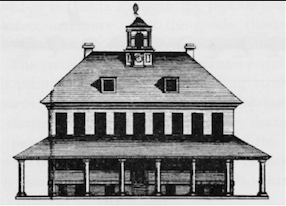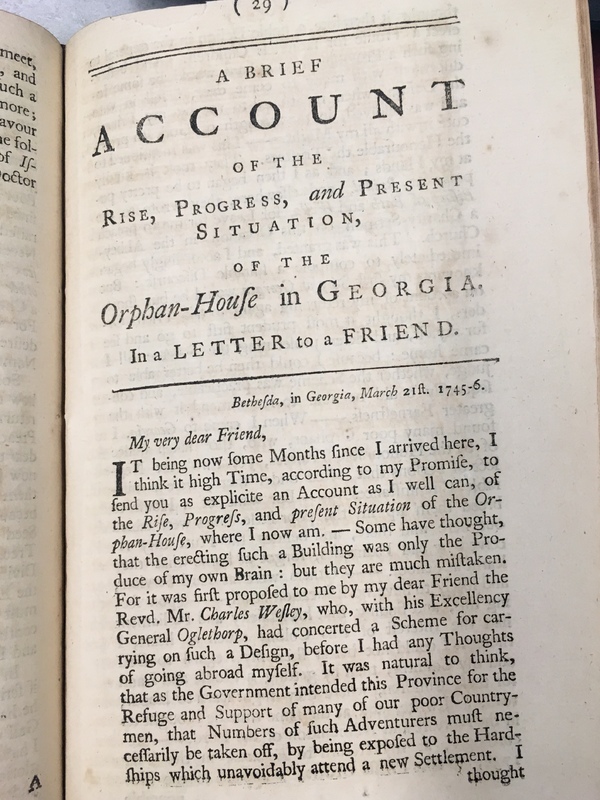A Brief Account of the Rise, Progress, and Present Situation of the Orphan- House in Georgia
In A Brief Account of the Rise, Progress, and Present Situation of the Orphan- House in Savannah written by George Whitefield, he described how the idea for the orphan house came to fruition, the purpose of it and what had been accomplished by the house that they called Bethesda. The concept of the house as a haven for orphans was thought of through Whitefield’s collaboration with Reverend Charles Wesley. Whitefield had travelled to Georgia and observed the need for education and protection for the many children without any family. He stated that the orphan house would be a place where they could “learn to labour, read, and write…” and “be brought up in the Nurture and Admonition of the Lord”. Whitefield described the difficulty of acquiring funds because most of the London churches denied him donations, however, the people generously gave, and he eventually received about a thousand and ten pounds to begin his formation of the house.
After first stopping in Philadelphia to collect supplies, George Whitefield finally made it to Georgia and acquired land to erect a house that began to house orphans as well as children whose families wanted them to attend school there and of poor families who relinquished care for a few months at a time. According to Lockley, Whitefield’s doctrine on how he ran the orphan house and school was based on his belief that all children were inherently willful and therefore wicked. In his account, Whitefield spoke of how they had an infirmary, a lot of livestock, and had taught the children vital skills that they would need to function in society. The contradiction between his outlook on the work of the house and the families who pulled their children from his care creates the question of the validity of his teaching.

